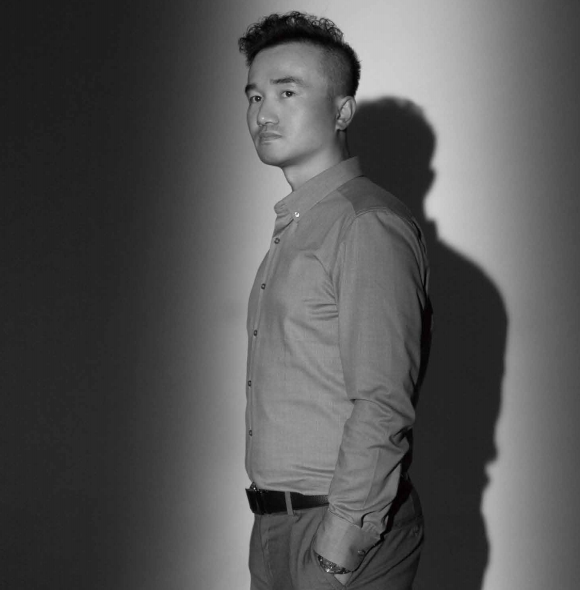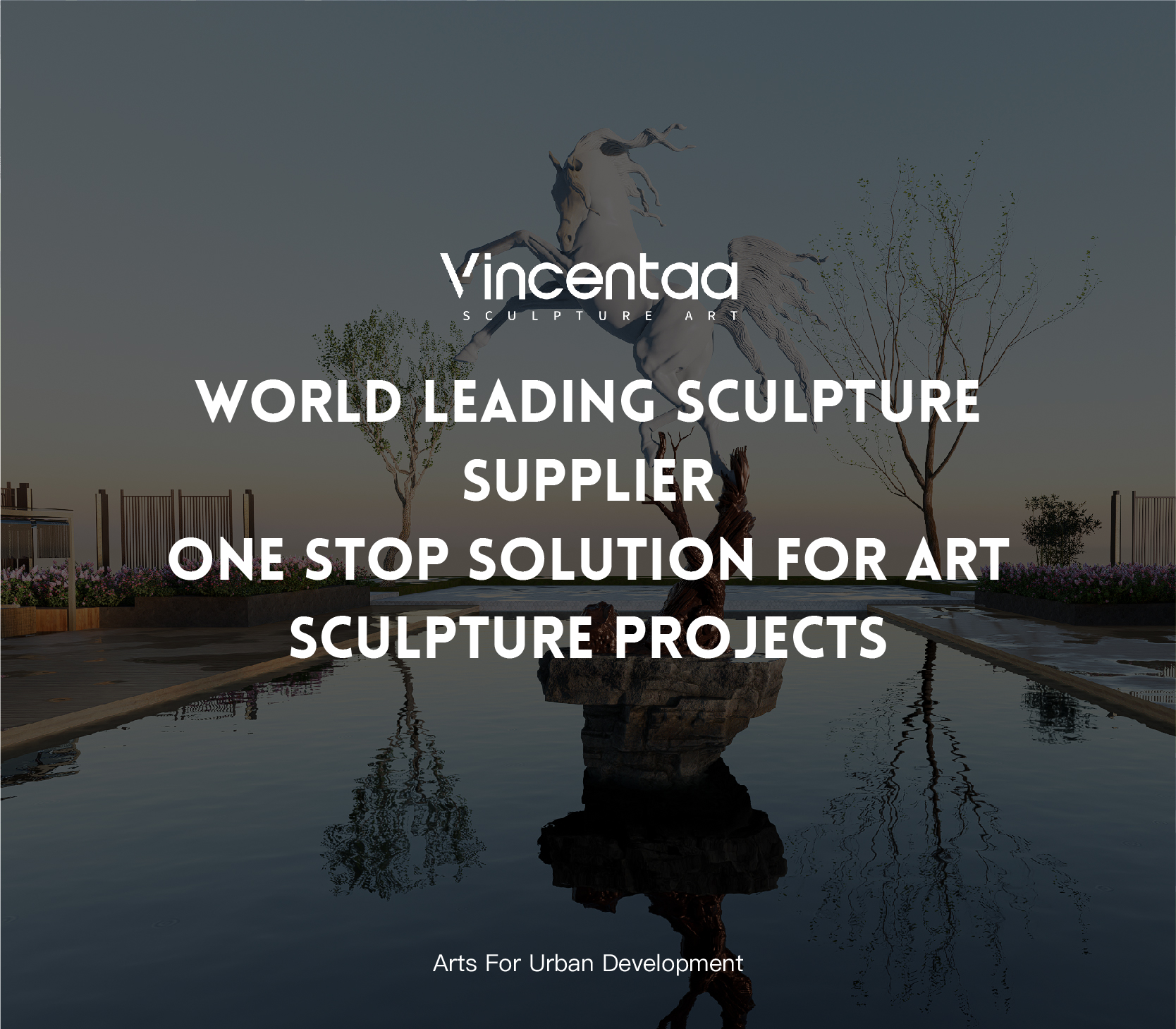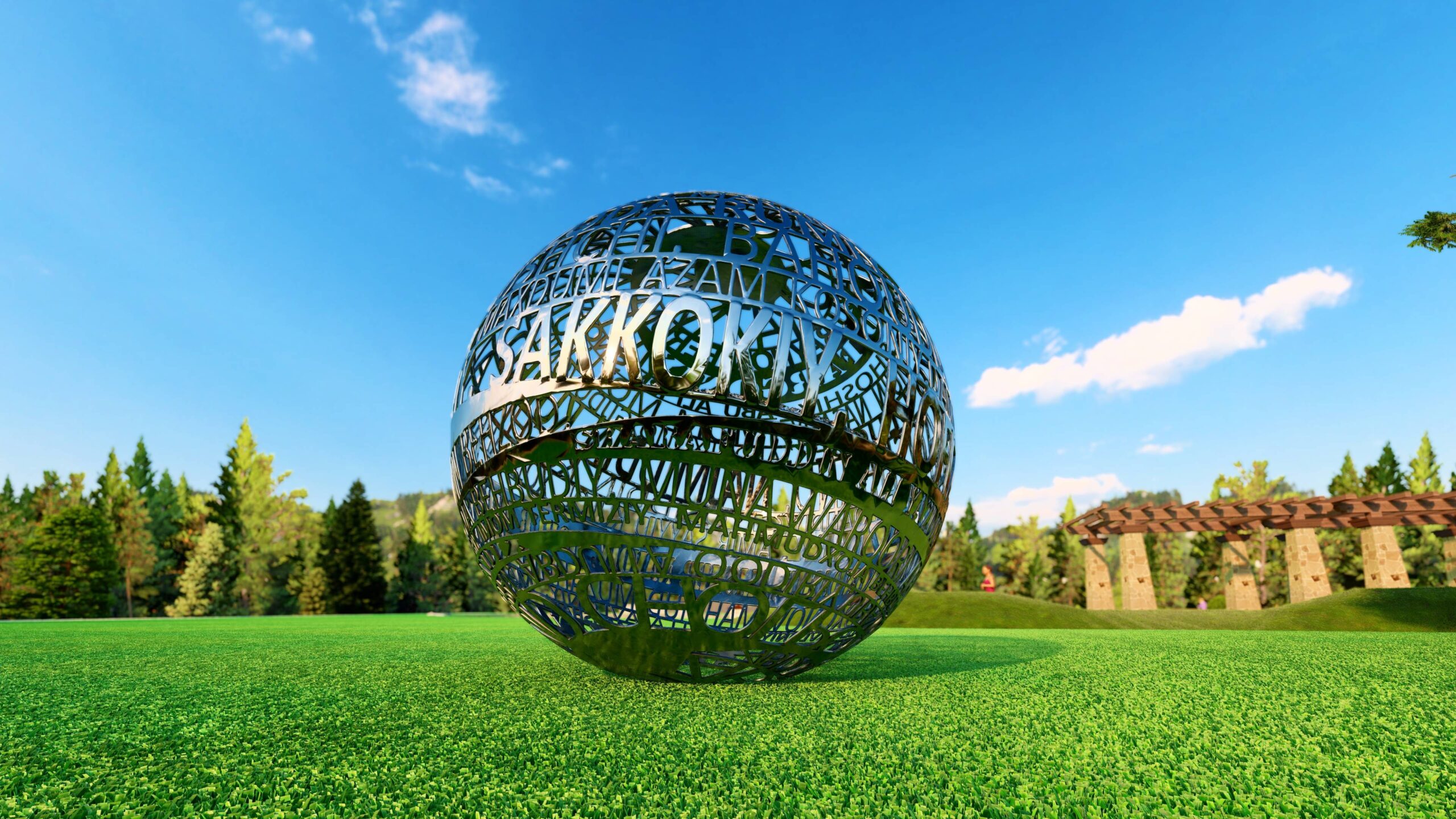Metal sculptures, with their unique texture and durability, occupy an important position in contemporary public art and commercial landscape design. Stainless steel and bronze are the two most widely used materials. This article will describe in detail the process flow, technical difficulties and advantages and disadvantages of these two metals in sculpture production, and also describe how to learn from traditional skills and emerging technologies to achieve breakthroughs in modern creation.
- Process and difficulties of stainless steel sculptures
Material characteristics and advantages
Stainless steel is highly favored for its corrosion resistance, high temperature resistance and low temperature resistance. Its high strength and ductility make the product extremely stable in outdoor environments. Modern stainless steel sculptures often become an important part of urban public art with their bright surface and modern lines.
Main production process
Cold forging
Using hydraulic forming equipment to accurately shape stainless steel plates at room temperature, complex three-dimensional shapes can be achieved.

Welding and splicing
Using argon arc welding and other technologies, the various parts are precisely spliced to ensure the stability of the overall structure. It is worth mentioning that professional sculpture factories such as Vincentaa are constantly innovating in welding technology. By pre-spot welding and then gradually welding, local deformation that may occur in high-temperature welding is effectively controlled.

Surface treatment
Common processes include mirror polishing, brushing and baking varnish treatment. Different surface effects can not only highlight the texture of the material itself, but also give the product a unique artistic style.

Production difficulties
Welding deformation problem
Local high temperature during welding can easily cause stainless steel deformation, requiring craftsmen to strictly control the welding temperature and sequence. Vincentaa’s craftsmen ensure that every weld is both beautiful and firm through precise temperature control and continuous monitoring.

High requirements for surface treatment
To achieve a uniform and delicate surface effect, not only fine grinding is required, but also multiple polishing and strict quality control are often required.
- The process and difficulties of bronze sculpture
Material characteristics and advantages
Bronze, with its unique color and good casting performance, has been regarded as a high-quality sculpture material for thousands of years. The warm luster and historical sense of bronze make it an important carrier for expressing cultural precipitation and traditional aesthetics.
Main production process
Lost wax casting
The traditional lost wax method first makes a wax mold, then covers it with refractory materials to form a mold, waits for the wax to melt and pours bronze, and finally breaks the mold to form a beautiful sculpture prototype.

Hot forging
Bronze softens after heating and is hammered multiple times to shape it. This process is very important for expressing product details and dynamic effects.
Surface treatment
Bronze is protected and beautified by chemical coloring, painting or gold plating to prevent oxidation and extend product life.

Production difficulties
Control of casting defects
Porosity and shrinkage may occur during the casting process, and the mold making and pouring process need to be carefully controlled to ensure the perfect presentation of each product.

Complexity of repeated heating and forging
Bronze sculptures often require multiple heating and hammering, which requires high technical requirements and cumbersome process flow. Through years of practice in bronze sculpture, Vincentaa has continuously optimized process parameters and effectively improved the stability and artistic expression of the product.
Surface oxidation problem
Bronze easily reacts with oxygen in the air to form patina. To maintain the beauty of the product, appropriate anti-oxidation treatment and regular maintenance are required.
- Integration and application of traditional and modern technology
Traditional metal sculpture technology focuses on hand-carving and fine casting, inheriting the essence of craftsmanship for hundreds of years; while modern technology introduces laser cutting, 3D scanning and digital design to make the production process more efficient and accurate.
In the actual production and service of Vincentaa, workers will use advanced CNC equipment to accurately cut stainless steel, combined with manual welding and meticulous polishing to ensure that each product has a solid structure and can present the creativity and personality of the product. Similarly, in the production of bronze sculptures, they continuously optimize the lost wax casting and hot forging processes to ensure the meticulousness and perfection of the products, thus winning wide recognition in the international market.







